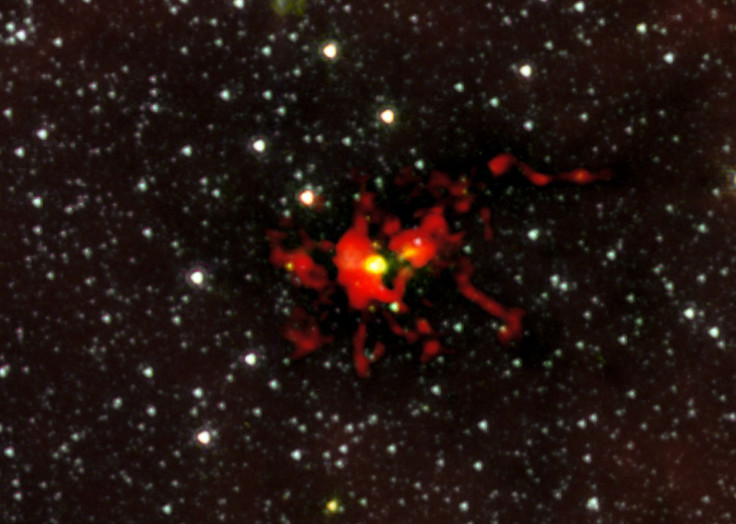Astronomers Discover Baby ‘Monster’ Star Developing In A Dark Cloud [PHOTO]
Astronomers have discovered a massive star developing in a dark cloud 11,000 light-years away. The so-called monster star could grow up to be a giant with a mass 100 times that of the sun, they say.

Led by Nicolas Peretto, from the CEA/AIM Paris-Saclay Cardiff University in the UK, the team of astronomers used the Atacama Large Millimeter/submillimeter array, or ALMA, to observe the massive star that is currently growing in the Spitzer Dark Cloud, SDC, 335.579-0.292. ALMA is a network of highly sensitive radio telescopes in Chile that can be used to observe the birth of stars and planet formation.
Massive stars are classified as those having a mass of at least 10 times that of the sun, notes the European Southern Observatory, but the classification has nothing to do with the actual size of the star. A dark cloud is a dense pocket of gas and dust that provides plenty of material for the formation of massive stars. According to ESO, astronomers believe that massive stars develop in these dark clouds by two possible methods. The first method involves smaller cores of dust and gas created within the cloud that collapse and create new stars in the process. The second method involves the collapse of the dark cloud, which can form massive stars as all the dust and gas merge at the center.
The core or "womb" of this new star developing in SDC 335.579-0.292 has a mass 500 times that of the sun, which means there is plenty of material to create one massive star. Pretto, speaking about the discovery using ALMA, said in a statement, “We wanted to see how monster stars form and grow, and we certainly achieved our aim! One of the sources we have found is an absolute giant — the largest protostellar core ever spotted in the Milky Way.” The protostellar core is the very beginning of star formation; after it gains enough mass, it will become a protostar.
The ALMA observations indicated the developing star is still collecting material within the dark cloud, notes ESO. Pretto notes SDC 335.579-0.292, through previous research, was a likely region to find a developing massive star, but he was still surprised to see a star that massive. “This object is expected to form a star that is up to 100 times more massive than the sun. Only about one in 10,000 of all the stars in the Milky Way reach that kind of mass!”

Gary Fuller, from the University of Manchester and part of the team that discovered the massive star, said the discovery was important because a star develops rather quickly and observing a star in its infancy is rare. The observation of the developing massive star gives further credit to the second theory of massive star formation within a dark cloud. Material, gas and dust are flowing inward to the center of the dark cloud, indicating its collapse, reports ESO.
© Copyright IBTimes 2025. All rights reserved.






















